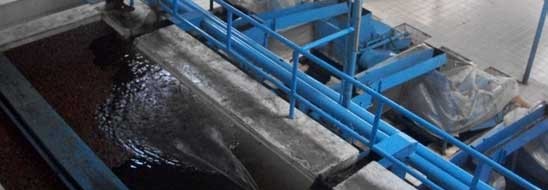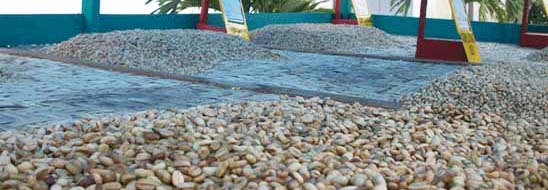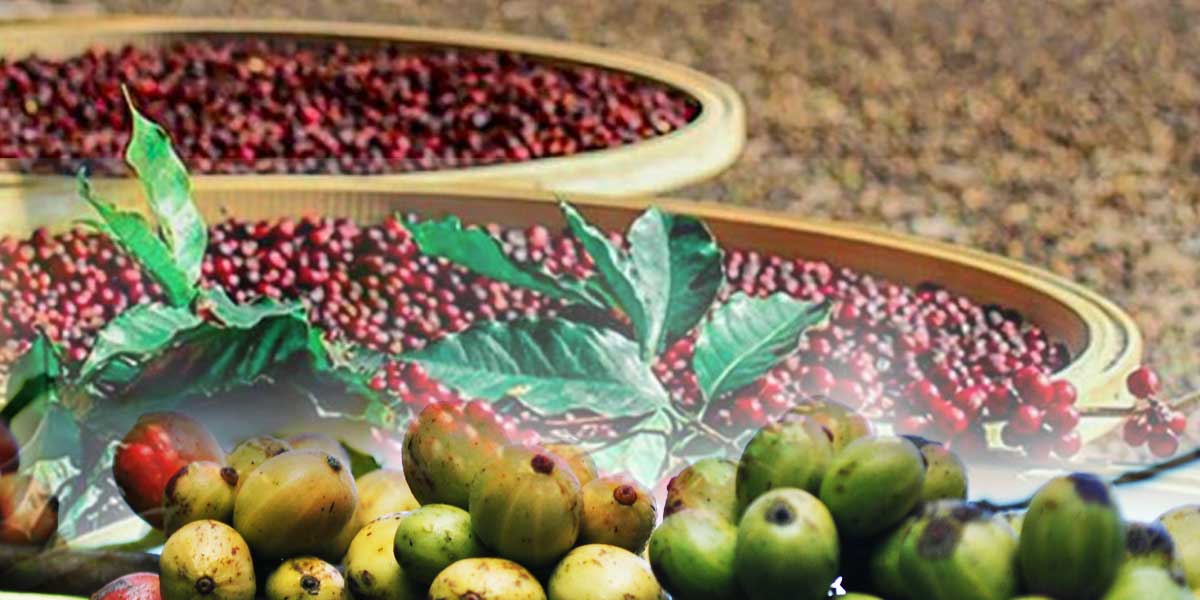Working at the coffee plantation Blawan and Kalisat
Before the coffee plantation became a plantation, wild land had to be cleared. Originally the Ijen Plateau was uninhabited. The administrators chartered people from the northern lowlands; attracting Madurese.
Coffee factory Blawan - processing beans
First the berries are picked. At the Ijen Plateau coffee berries are hand picked. After picking, coffee can be processed by two methods, namely either the "dry-process-method" or the "wet-process-method". The dry-process-method is simpler and less labor intensive as the berries can be strip picked. While the wet-process-method incorporates fermentation into the process and yields a mild coffee. At the Ijen Plateau the wet-process-method is being used. Because of that, the factory was built close to a well to secure water availability.
Coffee beans arrived in the coffee factory in Blawan - East Java, Ijen Plateau

Lots of water running through the factory
Washing coffee berries at the coffee factory Blawan - Ijen Plateau, East Java
At the factory in Blawan, coffee is brought in at the 'bak glodong'. Via the 'cones tank' the coffee is transported by water to the 'pulper', a machine that removes the flesh of the berry. Hereafter the seeds (berries without flesh, but usually called beans) are collected in bags of 25 kilograms in the area called 'bak fermentasi'. The bags are laid to rest, so the coffee can get fermented which removes the slimy layer of mucilage still present on the bean. When the fermentation is finished, the beans are washed with large quantities of fresh water to remove the fermentation residue, which generates massive amounts of coffee wastewater.
 Drying process determines coffee quality
Drying process determines coffee quality
Drying coffee beans in the open air - Blawan coffee factory, Ijen Plateau
Finally, the seeds are dried. The best (but least used) method of drying coffee is using drying tables. In this method, the pulped and fermented coffee is spread thinly on raised beds, which allows the air to pass on all sides of the coffee, and then the coffee is mixed by hand. In this method the drying that takes place is more uniform, and fermentation is less likely. In Blawan only luwak coffee is dried according to this method. All regular coffee is dried on a concrete patio.
In Blawan, after the coffee has been dried by the sun, the latter percentage water is taken out of the beans in a construction called 'vis dryer'. This is a building on stilts. Under the floor one can find a system of pipes through which heated air is being pumped. The air is heated by a stove running on wood. This brings the air temperature around the coffee beans up to 40 degrees Celsius. When the water percentage of the beans is reduced till a maximum of 11%, the drying process is finished. A water percentage of 11% is excellent as the beans are their best. The water percentage in the beans is tested with a simple tester.

Sorting, packing and 'Kopi Rolas'
After drying, the beans are transported to the 'huller'. That is a sieve in which the smallest beans are sorted but also separated from the last traces of flesh. Hereafter the remaining beans - thus those with a sufficient size - are sorted in the 'ruang sortasi'. This is manual work. Then the beans get packed and are ready for transportation to Surabaya. The label on the coffee is 'Java coffee Blawan' and 'Java coffee Gunung Blauw'. 'Gunung Blauw' was the first section ('afdeeling') where coffee was planted at the coffee plantation Blawan.
In Surabaya the beans are further processed to 'Kopi Rolas'.

